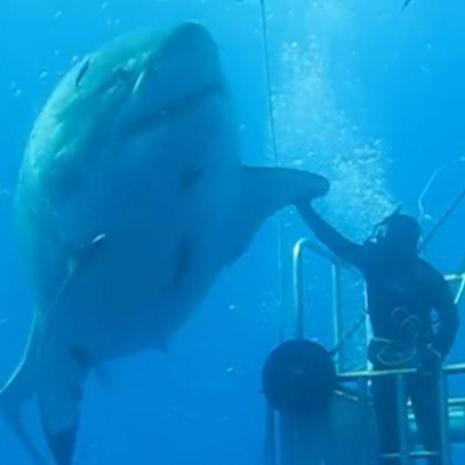

In the blinding storm, the rescue helicopter is already in a perilous situation, and when the sharks intervene, it crashes into the facility, blowing half of it. Jim loses his hand while congratulating the shark, and the others call for a rescue team. They pass the trial with flying colors, but this is precisely when the horror begins. However, Carter manages to bring one shark to the underwater lab, and Susan takes a protein sample from its brain. Carter dives underwater to neutralize the sharks, but they seem intelligent enough to take out the security cameras and lights that light up the underwater corridor. When the researchers ask for samples to conduct the final trial, a shark needs to be retrieved from the water.

The lab crew moreover comprises engineer Tom Scoggins and in-house cook Sherman “Preacher” Dudley.Ī storm is coming, and a shortage of time compels the researchers to skip a few trials. Most of the lab is submerged underwater and surrounded by titanium wires. There are three test sharks in the facility, two first-generation and a second-generation female. Marine biologist Janice Higgins shows him around the premises. The real story begins after mountaineer and corporate executive Russell Franklin comes to the research facility for a private tour. They are working on a cure for Alzheimer’s from the brain protein of the animal, a cure which they claim to obliterate brain degeneration. To give you a context, the shark that perpetrated the previous attack is part of a research project by Susan McAlester and Jim Whitlock. On the next day, the tale of test mako sharks running amok makes a newspaper headline. Sharpshooter harpooner Carter Blake comes to the rescue. ”īut although attacks on humans can be deadly, a shark is much more likely to avoid humans - and experts say humans would do well to do the same.A pair of couples are having fun on a boat, but a sudden shark attack spills water on their fun. “We need to remember that if these weren’t sharks, would we accept some of the things that were shown and done to them? We wouldn’t because sharks have a certain cache to them that allows us to somehow think of them as evil and/or unworthy of the same degree of respect that we would give other animals. So why would you feel the need to harass an 18-20 foot shark?” Burgess said. Would you go grab the tail of a lion if you were out in the wild? I think not. “White sharks, because of their large size and big mouths, are dangerous. However, experts say that instances of sharks attacking humans are extremely rare and that the negative stereotypes associated with the creatures are exaggerated.Įach year, there are anywhere between 70 to 100 shark attacks worldwide, resulting in about five to 15 deaths, according to the Florida Museum of Natural History at the University of Florida.īurgess said he disapproved of Padilla high-fiving the shark and said humans should give the animals their space. Sharks have been an enduring fascination for humans for decades, and none more so than the great white shark, immortalized in people’s memories - and nightmares - by the 1975 Steven Spielberg film “Jaws.” The only thing I take umbrage to is that she was pregnant, I’m not sure that she was from what I could see.” “I’m not sure it’s 20, I suspect it’s a little less than that. One of the largest that has ever been seen in the water,” Burgess told ABC News. Padilla, who works for the program, said he believed the shark was a pregnant female around 20 feet in length and more than 50 years old.īut George Burgess, director emeritus of the International Shark Attack File maintained by the Florida Museum of Natural History, cast doubt on estimates that the shark was 20 feet in length. The videos were filmed off the coast of Mexico’s Guadalupe Island and were previously aired as part of the channel’s “Shark Week” lineup. In a separate “Shark Week” video, experts affix a tag to the shark just before it swims away. In one of the videos posted in 2015, Padilla reaches for its fin and “high fives” the shark as it moves past him. The shark, nicknamed “Deep Blue” by expert Mauricio Hoyos Padilla, could be one of the biggest great whites ever filmed, according to Discovery, the network that airs “Shark Week.”Īs fans tune in for “Shark Week,” interest in Padilla’s videos of “Deep Blue” that posted to Facebook has surged once more. Stunning footage of what may be the world’s largest great white shark caught on camera has resurfaced.


 0 kommentar(er)
0 kommentar(er)
